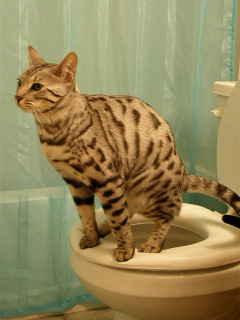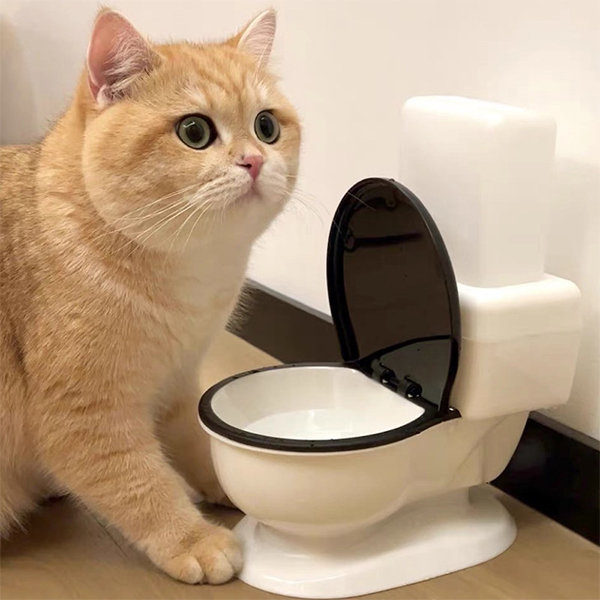Dangers of Flushing Cat Poop Down Your Toilet - Avoid Potential Issues
Dangers of Flushing Cat Poop Down Your Toilet - Avoid Potential Issues
Blog Article
Were you trying to find tips Can You Flush Cat Poo or Litter Down the Toilet??

Introduction
As cat proprietors, it's necessary to bear in mind exactly how we take care of our feline good friends' waste. While it might appear convenient to purge cat poop down the toilet, this method can have harmful consequences for both the atmosphere and human health.
Alternatives to Flushing
The good news is, there are much safer and more liable ways to deal with cat poop. Consider the adhering to alternatives:
1. Scoop and Dispose in Trash
One of the most typical approach of getting rid of pet cat poop is to scoop it right into a naturally degradable bag and toss it in the trash. Be sure to use a dedicated clutter scoop and get rid of the waste without delay.
2. Usage Biodegradable Litter
Opt for biodegradable pet cat trash made from products such as corn or wheat. These clutters are eco-friendly and can be safely dealt with in the garbage.
3. Hide in the Yard
If you have a yard, consider burying pet cat waste in a marked area away from veggie gardens and water resources. Make sure to dig deep adequate to prevent contamination of groundwater.
4. Install a Pet Waste Disposal System
Invest in a family pet waste disposal system particularly designed for pet cat waste. These systems utilize enzymes to break down the waste, decreasing smell and ecological effect.
Health Risks
In addition to ecological issues, flushing pet cat waste can additionally posture health and wellness dangers to people. Cat feces might include Toxoplasma gondii, a parasite that can cause toxoplasmosis-- a potentially extreme health problem, particularly for expecting ladies and individuals with damaged immune systems.
Environmental Impact
Purging cat poop introduces dangerous pathogens and bloodsuckers into the water supply, positioning a substantial threat to aquatic ecosystems. These contaminants can adversely affect aquatic life and compromise water top quality.
Final thought
Responsible animal ownership expands beyond supplying food and shelter-- it additionally entails appropriate waste monitoring. By refraining from flushing cat poop down the bathroom and choosing alternate disposal approaches, we can lessen our environmental impact and safeguard human wellness.
Why Can’t I Flush Cat Poop?
It Spreads a Parasite
Cats are frequently infected with a parasite called toxoplasma gondii. The parasite causes an infection called toxoplasmosis. It is usually harmless to cats. The parasite only uses cat poop as a host for its eggs. Otherwise, the cat’s immune system usually keeps the infection at low enough levels to maintain its own health. But it does not stop the develop of eggs. These eggs are tiny and surprisingly tough. They may survive for a year before they begin to grow. But that’s the problem.
Our wastewater system is not designed to deal with toxoplasmosis eggs. Instead, most eggs will flush from your toilet into sewers and wastewater management plants. After the sewage is treated for many other harmful things in it, it is typically released into local rivers, lakes, or oceans. Here, the toxoplasmosis eggs can find new hosts, including starfish, crabs, otters, and many other wildlife. For many, this is a significant risk to their health. Toxoplasmosis can also end up infecting water sources that are important for agriculture, which means our deer, pigs, and sheep can get infected too.
Is There Risk to Humans?
There can be a risk to human life from flushing cat poop down the toilet. If you do so, the parasites from your cat’s poop can end up in shellfish, game animals, or livestock. If this meat is then served raw or undercooked, the people who eat it can get sick.
In fact, according to the CDC, 40 million people in the United States are infected with toxoplasma gondii. They get it from exposure to infected seafood, or from some kind of cat poop contamination, like drinking from a stream that is contaminated or touching anything that has come into contact with cat poop. That includes just cleaning a cat litter box.
Most people who get infected with these parasites will not develop any symptoms. However, for pregnant women or for those with compromised immune systems, the parasite can cause severe health problems.
How to Handle Cat Poop
The best way to handle cat poop is actually to clean the box more often. The eggs that the parasite sheds will not become active until one to five days after the cat poops. That means that if you clean daily, you’re much less likely to come into direct contact with infectious eggs.
That said, always dispose of cat poop in the garbage and not down the toilet. Wash your hands before and after you clean the litter box, and bring the bag of poop right outside to your garbage bins.
https://trenchlesssolutionsusa.com/why-cant-i-flush-cat-poop/

I found that piece of writing on Don’t flush cat feces down the toilet when looking around the web. I beg you take the opportunity to promote this article if you appreciated it. I cherish reading our article about Don’t flush cat feces down the toilet.
View Website Report this page